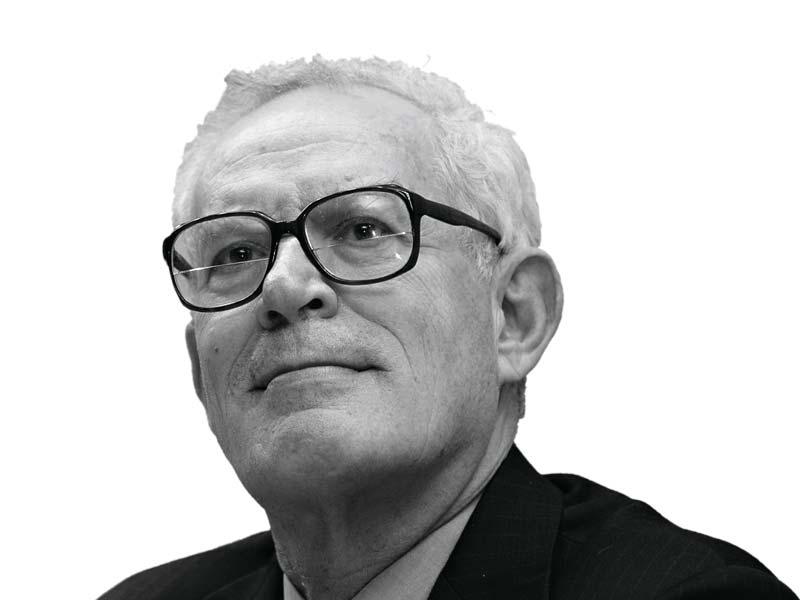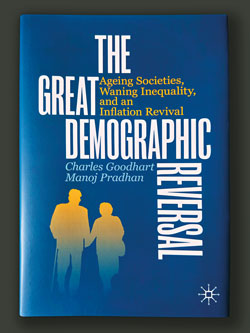
Top 5
Charles Goodhart has seen it all: recessions, stagflation and boom years. In his book, The Great Demographic Reversal: Ageing Societies, Waning Inequality, and an Inflation Revival, co-authored with Manoj Pradhan, the former Bank of England adviser predicted the revival of a beast long thought dead by most economists: high inflation. It was cheap Chinese and Eastern European workers who kept inflation rates low over the last decades, rather than central bank policies, Goodhart argues, but the tide has now turned. Ageing populations will bring about higher inflation and interest rates, but also less inequality, he argues in an exclusive interview with World Finance’s Alex Katsomitros, while explaining how we can deal with climate change and musing over what central bankers and sheep have in common.
What prompted you to write the book?
When Manoj and I were working at Morgan Stanley, we were asking ourselves why inflation was running below target, despite the expansionary policies of central banks. We came round to the view that there was an underlying trend, caused by the weakness of labour markets and the sluggishness of wages. We put that down to demography and globalisation, notably the arrival of China and Eastern Europe into the world’s trading system.
As you predicted, inflation and interest rates have increased. Do you feel vindicated by recent events?
Yes and no. Mainstream economists still believe that current inflation is temporary. Central banks forecast that we will return to inflationary targets in two or three years, and interest rates will come down. We believe that COVID-19 was a trigger for a change to a more inflationary period from now to 2050.
Some put the blame on the war in Ukraine for rising inflation, others focus on the pandemic. What is your take?
We wrote the book in 2019. We thought that the momentum of weak labour and reduced trade union membership would carry on, although we also believed that demography and deglobalisation would change this. But we didn’t know when the shift would take place. COVID-19 and the war brought this change forward. What remains to be seen is whether inflationary pressures will persist when these temporary developments disappear.
The economist Michael Pettis recently told World Finance that China can only sustain current growth levels by increasing the household share of GDP and reducing government consumption. Do you think they can reform their economy?
They will have to. They are trying to move up the value chain by shifting from low-tech to high-tech products, and they will have to increase internal consumption. The rift with the US, which will not go away, means that the growth rate of exports will decline. Aggregate growth rates have been between six and eight percent in real terms, and with a declining workforce, they will be lucky if they have 2.5 percent growth. If your workforce is falling by 1.5 percent annually, you are lucky to have aggregate growth of 2.5 percent. That means that your productivity per worker rises by four percent, which is huge.
You argue that inflation will rise due to a shortage of workers. However, there’s still a big pool of cheap workers globally. In the book you discuss India and Africa, but what about Vietnam, Indonesia and Pakistan?
In Vietnam and Indonesia birth rates have already started declining. The areas where high birth rates remain are Africa, certain Muslim countries and perhaps India, although it is falling there too. The problem is how to use this workforce.
One possibility is massive migration, but this is politically unpopular, as we saw with the election of the far right in Italy. So if that is not an option, you have to take manufacturing to those countries. To do that, you need political stability, administrative competence and a well-educated workforce. It is possible and desirable that Africa may have these, plus a degree of unification, so perhaps Africa and parts of South Asia could become the next China. But it hasn’t happened yet.
What about automation?
We need all the robots we can get. As the proportion of the old increases, we will have more incapacitated people. The problem is not age itself, but incapacitating illnesses like Alzheimer’s, dementia, Parkinson’s, arthritis. Those suffering from these diseases cannot carry out ordinary activities. They need supportive care and human sympathy. Robots are not sufficient. They could help to get people into a wheelchair, but we need people.
Many youngsters believe that the postwar generation is enjoying undeserved privileges. Is this anger justified?
To some extent, yes. We, the old, have support in the form of care, medicine, NHS, and pensions, paid by the working-age population. There are relatively few of us and many younger people, which means they can support this fiscal generosity. But when they grow old, there will be fewer workers to support them. If the future old have the same level of benefits and retirement age, there will be a higher tax burden on younger generations and they will not like that. Tax rates will have to go up or support to the old go down. One reason why this has happened is that the old vote at higher proportions than the young. If the young voted for lower taxes and fewer benefits to the old, they would get somewhere, but the proportion of voting 20-year-olds is much lower than that of 60-year-olds.

Economists who espouse modern monetary theory believe that deficits and debts don’t matter. What do you think?
They say that deficits and debt are not so much a problem, but inflation is. Taxation will have to be raised to control inflation, if this goes out of hand. The problem is that rising deficits lead to unsustainable fiscal problems, which tend to cause inflationary pressure and require higher taxation.
Another issue you discuss in the book is central bank independence. Why do you think it is in danger?
The difficulties facing the UK recently {the week after the since U-turned mini-budget was announced} are instructive. The underlying problem is that we cannot bring back inflation to target without the fiscal position becoming more sustainable. If you try to deal with inflation solely by raising interest rates, you get two effects.
First, that reduces demand and output growth and increases unemployment, which brings a recession with rising expenditures on unemployment benefits and lower taxes. Higher interest rates also increase public debt immediately, particularly because of quantitative easing, which has effectively substituted long-dated government debt for overnight government debt. So with higher interest rates, you are making the government’s fiscal position worse.
And if people start thinking that public debt becomes unsustainable, they flee the government bond market, as happened in the UK. If the government bond market starts to collapse, the only thing that can be done, which the Bank of England did, is reverse course and go back to quantitative easing, which brings more inflation. You cannot defeat inflation in the long term, unless fiscal and monetary policies are sufficiently restrictive to make the public debt position seem sustainable. When you get policies such as those Truss and Kwarteng tried introducing, it is clearly not there.
You argue that labour will gain the upper hand due to a shortage of workers. Does that mean that we will see less populism?
It is very likely. I hesitate to make political forecasts, but I believe we will see less inequality. The massive increase in the availability of labour, particularly due to offshoring to China, will be reversed. In many countries, particularly the US, there has been little real income growth for unskilled workers. We now see a reversal, and with interest rates going up, we will see a decline in asset prices. Because of the shortage of workers, the unskilled will see relative growth in real wages and those with capital will do less well, so inequality within countries will decline.
Another issue that looms large over monetary policy is climate change. Is there some kind of balance between the economy and the environment?
Where I think there should be a balance is on how we pay the expensive effects of carbon usage reduction. Economists think that we should adopt a carbon usage tax. However, such a tax would make the carbon-intensive segments of industry, like steel and cement, very uncompetitive compared to countries where there is no such tax. Opposition from industries subject to heavy taxation would be sufficient to stop it. Also the net-zero activists do not support carbon taxes. I don’t know how they think we will finance the extra expenditures needed to move towards renewables.
In the book you approach an economic issue through a non-economic lens: demographics. Many people believe that economics has lost its way, that it’s too mathematical and just out of touch.
I am with the latter, as I am more of an economic historian rather than a pure economist. Our book has two defining features. The first is that macroeconomists tend to focus on their own country, which is too narrow. We have two chapters on Asian countries, Japan and China, but no chapter on the US, Europe or the UK, because we think that the rise of China has been the most important feature of the last 30 years. The second difference is that they focus on demand-side policies, whereas we focus on supply.
You own a sheep farm in Devon. Has farming taught you anything about economics?
Sometimes I make this analogy: central bankers and economists in some ways are like sheep. They tend to flock together. If you are in a position of power where what you do has important effects on everyone, you like being able to defend and protect yourself by saying ‘well, I am doing exactly what everyone else thinks is right.’ They have a flock mentality.


